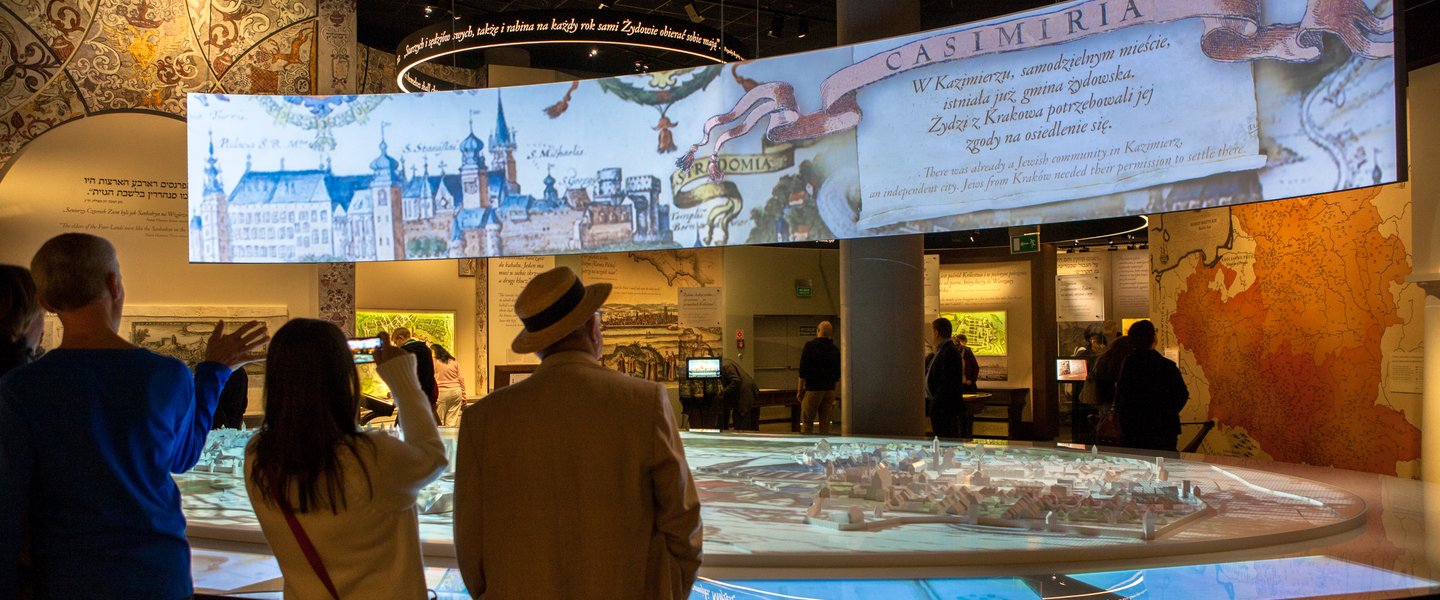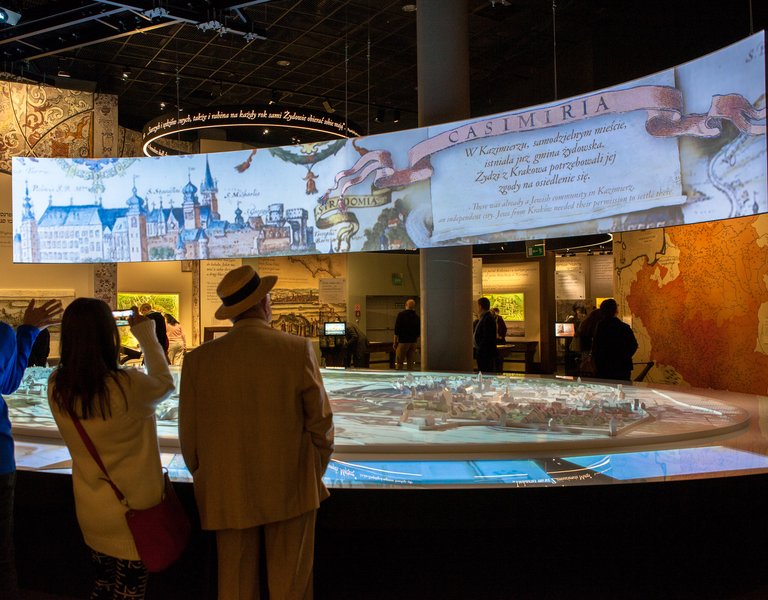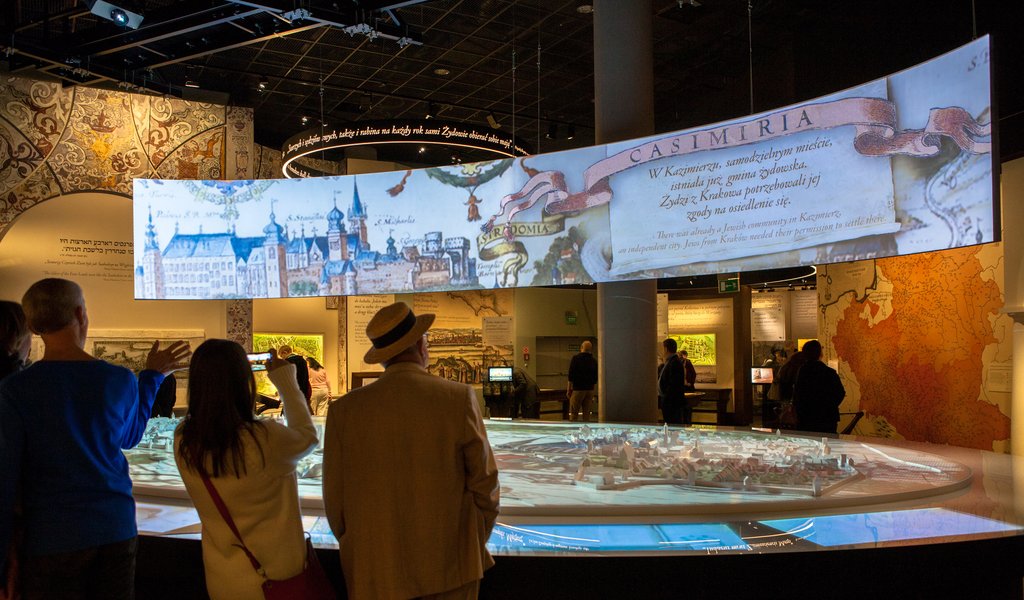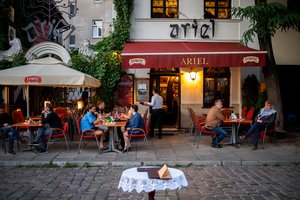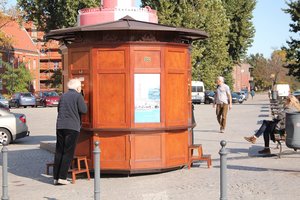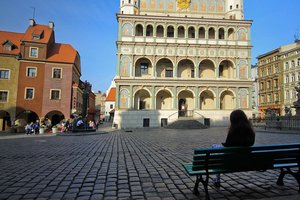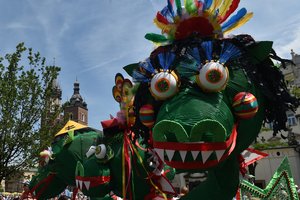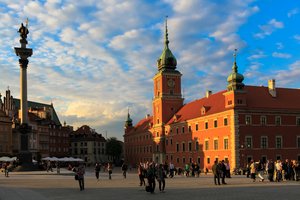Thousand years of history
The heritage of Polish Jews, spanning almost one thousand years, is sparking newfound interest among Poles and people visiting Poland. The number of guides showing people former Jewish districts in Warsaw, Kraków or Łódź also keeps growing. The anniversary of the 1943 Warsaw Ghetto Uprising is commemorated every year on the 19th of April and is an event of special historical significance.
Apart from the so-called “Movie Łódź” and “Clothing industry Łódź”, the so-called “Jewish Łódź” themes is a sightseeing programme that is most frequently selected by tourists visiting that city.
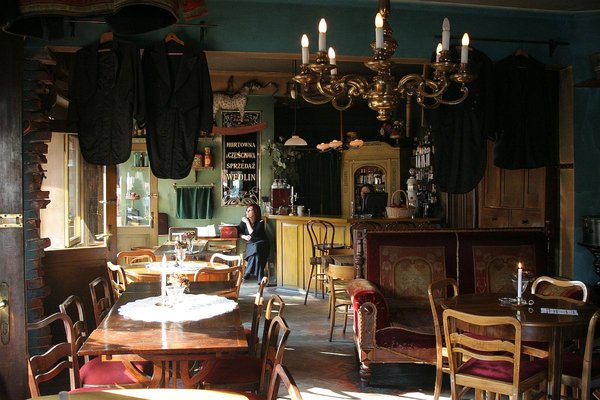
“The Interest in that route picked up in 2003, when the city started to attach importance to places associated with Jewish history of Łódź, and among others renovated the Radegast station, i.e. the Lódź Umschlagplatz, which currently houses a division of the Łódź of Independence Traditions” – says Joanna Podolska, director of the Marek Edelman Dialogue Centre in Łódź in an interview with Polska.pl. She adds that there is an increasing number of places where one can pay tribute to the memory of former Jewish residents. One such place is the Survivors’ Park with trees of the Survivors, which is visited by children and grandchildren of Łódź Jews.
“Many Łódź inhabitants interested in history come and join walks we organise”– says Joanna Podolska. She goes on to say that the interest has been intensified by recent measures undertaken by the Centre – such as demarcation of the ghetto borders, open lectures and books published by the institution. In recent years Łódź inhabitants have expressed an interested in gaining snippets of knowledge about the lives of Jews who had lived in their city. However, Podolska of the Marek Edelman Dialogue Centre, says that, similar trends are also visible in Kraków, Białystok, Lublin or Warsaw. In the capital of Małopolska inhabitants and groups from all over the world discover the charming town of Kazimierz, from Białystok they frequently journey to Tykocin, the cradle of Podlasie Jews, and from Lublin to Chełm or Kazimierz on the Vistula River where Jewish communities were once very abundant.
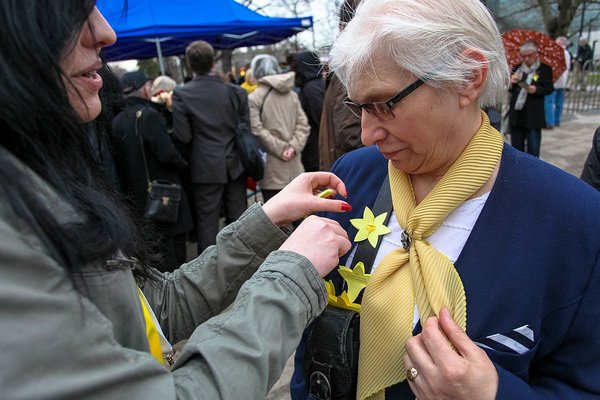
Daffodils 2015
These flowers are associated with Mark Edelman, the last leader of the Jewish Combat Organisation and one of the leaders of the Warsaw Ghetto Uprising, which was started on 19 April 1943. It was the very first urban insurgence in Europe under the German occupation. Its participants defended dignity and humanity under the threat of merciless liquidation of the ghetto by the Nazi occupants.
On each anniversary of the event Edelman placed yellow daffodils at the Monument to Heroes of the Warsaw Ghetto. And that is why the Museum of the History of Polish Jews commemorates heroes from World War 2 by using these particular flowers.
In honour of the participants of these events, on 19th April, on the 72nd anniversary of the uprising, everyone can pin a paper daffodil to the coat or suit lapel.
“This is a natural return to what existed in Poland for a thousand years, because after all the presence of the Jewish nation on Polish lands has spanned a millennium. Poles cut off from the history of Polish Jews for fifty years – i.e. since the outbreak of World War 2 in 1939 until the fall of the communist regime in 1989 – now tend to go back to” – says Michael Schudrich, the Chief Rabbi of Poland in an interview with Polska.pl. “Many people cannot imagine the history of Poland without Jews. That is why they are looking for their traces,” Rabbi Schudrich adds.
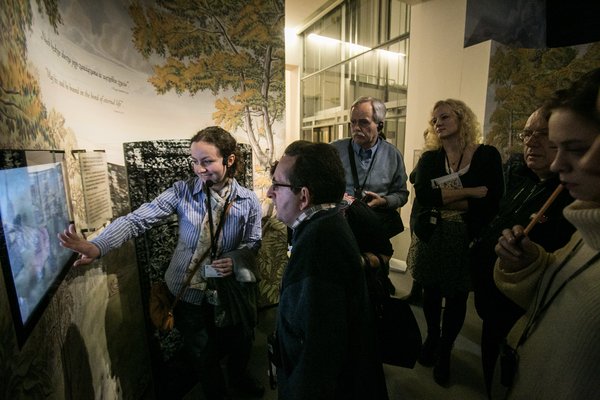 This newfound curiosity is becoming increasingly common and it can be best seen in the example of the Polish Museum of the History of Polish Jews, which was opened in October 2014 in Warsaw. The permanent exhibition, which showcases the one thousand years that Jews have spent on Polish lands, attracts thousands of visitors ever day. In anticipation of the great interest, already in 2012 the museum decided to train guides-educators and commenced recruitment to the Polin Academy that delivers the training courses. – “We started the courses in January 2012. We wanted to get ready for the permanent exhibition” – explains Dagmara Mańka-Wizor, senior education expert in the POLIN Museum to Polska.pl. – “During the advanced weekend training held every year the prospective educators and guides went through more than 200 hours of training connected with the exhibition as such, but also the history of Poland, Polish Jews and the Jewish tradition and culture. Their training also focused on improving so-called soft skills, such as delivering informal courses They also became acquainted with the standards expected of guides, and learnt how to handle groups, how to organise exhibition sightseeing and work with guests from all over the world,” adds Dagmara Mańka-Wizor.
This newfound curiosity is becoming increasingly common and it can be best seen in the example of the Polish Museum of the History of Polish Jews, which was opened in October 2014 in Warsaw. The permanent exhibition, which showcases the one thousand years that Jews have spent on Polish lands, attracts thousands of visitors ever day. In anticipation of the great interest, already in 2012 the museum decided to train guides-educators and commenced recruitment to the Polin Academy that delivers the training courses. – “We started the courses in January 2012. We wanted to get ready for the permanent exhibition” – explains Dagmara Mańka-Wizor, senior education expert in the POLIN Museum to Polska.pl. – “During the advanced weekend training held every year the prospective educators and guides went through more than 200 hours of training connected with the exhibition as such, but also the history of Poland, Polish Jews and the Jewish tradition and culture. Their training also focused on improving so-called soft skills, such as delivering informal courses They also became acquainted with the standards expected of guides, and learnt how to handle groups, how to organise exhibition sightseeing and work with guests from all over the world,” adds Dagmara Mańka-Wizor.
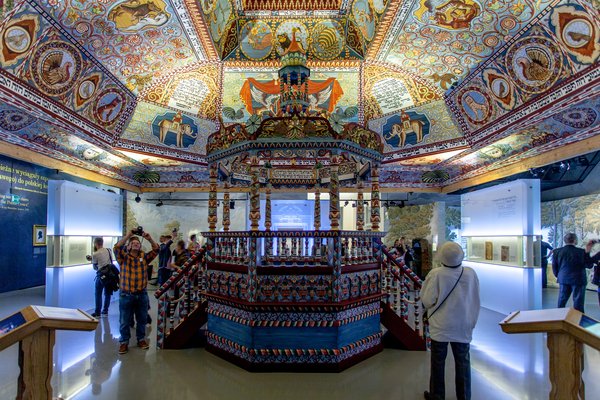 The growing scale of this search is best to be seen on the example of the Polish Museum of the History of Polish Jews opened in Warsaw in October 2014. The permanent exhibition, which depicts the 1000 years of presence of the Jews on Polish lands, is visited every day even by a few thousand persons. In anticipation of the great interest, already in 2012 the museum decided to train guides-educators and commenced recruitment to the Polin Academy that delivers the training courses. – “We started the courses in January 2012. We wanted to get ready for the permanent exhibition” – explains Dagmara Mańka-Wizor, senior education expert in the POLIN Museum to Polska.pl. – “During the annual advanced weekend training the prospective educators and guides went through more than 200 hours of training connected with the exhibition as such, but also the history of Poland, Polish Jews or the Jewish tradition and culture. Their training also comprised the so-called soft skills, such as delivering informal courses or education. They also got to know standards of work binding for guides, and learnt how to handle groups, how to organise exhibition sightseeing and how to work with guests from all over the world” - adds Dagmara Mańka-Wizor.
The growing scale of this search is best to be seen on the example of the Polish Museum of the History of Polish Jews opened in Warsaw in October 2014. The permanent exhibition, which depicts the 1000 years of presence of the Jews on Polish lands, is visited every day even by a few thousand persons. In anticipation of the great interest, already in 2012 the museum decided to train guides-educators and commenced recruitment to the Polin Academy that delivers the training courses. – “We started the courses in January 2012. We wanted to get ready for the permanent exhibition” – explains Dagmara Mańka-Wizor, senior education expert in the POLIN Museum to Polska.pl. – “During the annual advanced weekend training the prospective educators and guides went through more than 200 hours of training connected with the exhibition as such, but also the history of Poland, Polish Jews or the Jewish tradition and culture. Their training also comprised the so-called soft skills, such as delivering informal courses or education. They also got to know standards of work binding for guides, and learnt how to handle groups, how to organise exhibition sightseeing and how to work with guests from all over the world” - adds Dagmara Mańka-Wizor.
KAROLINA KOWALSKA
17.04.2015
